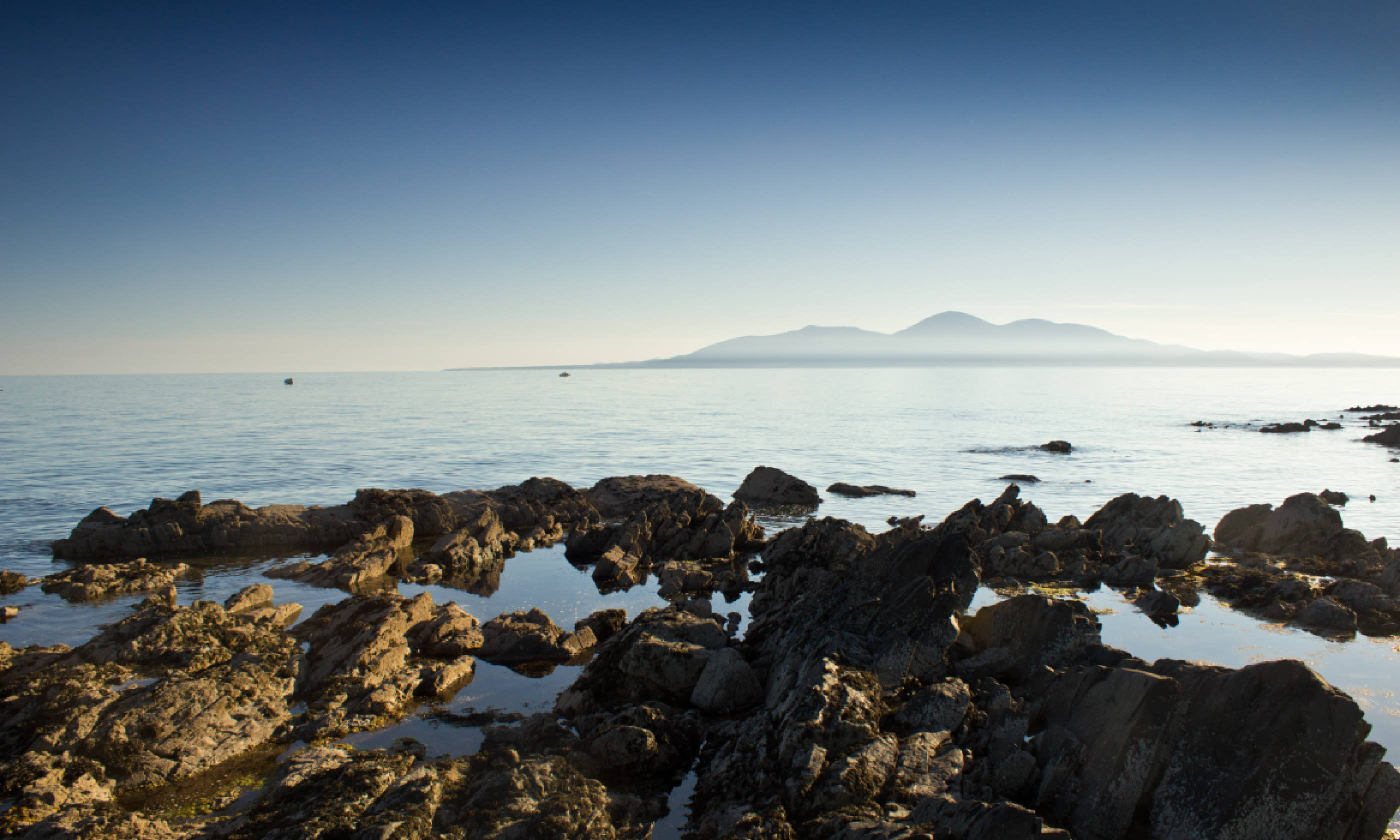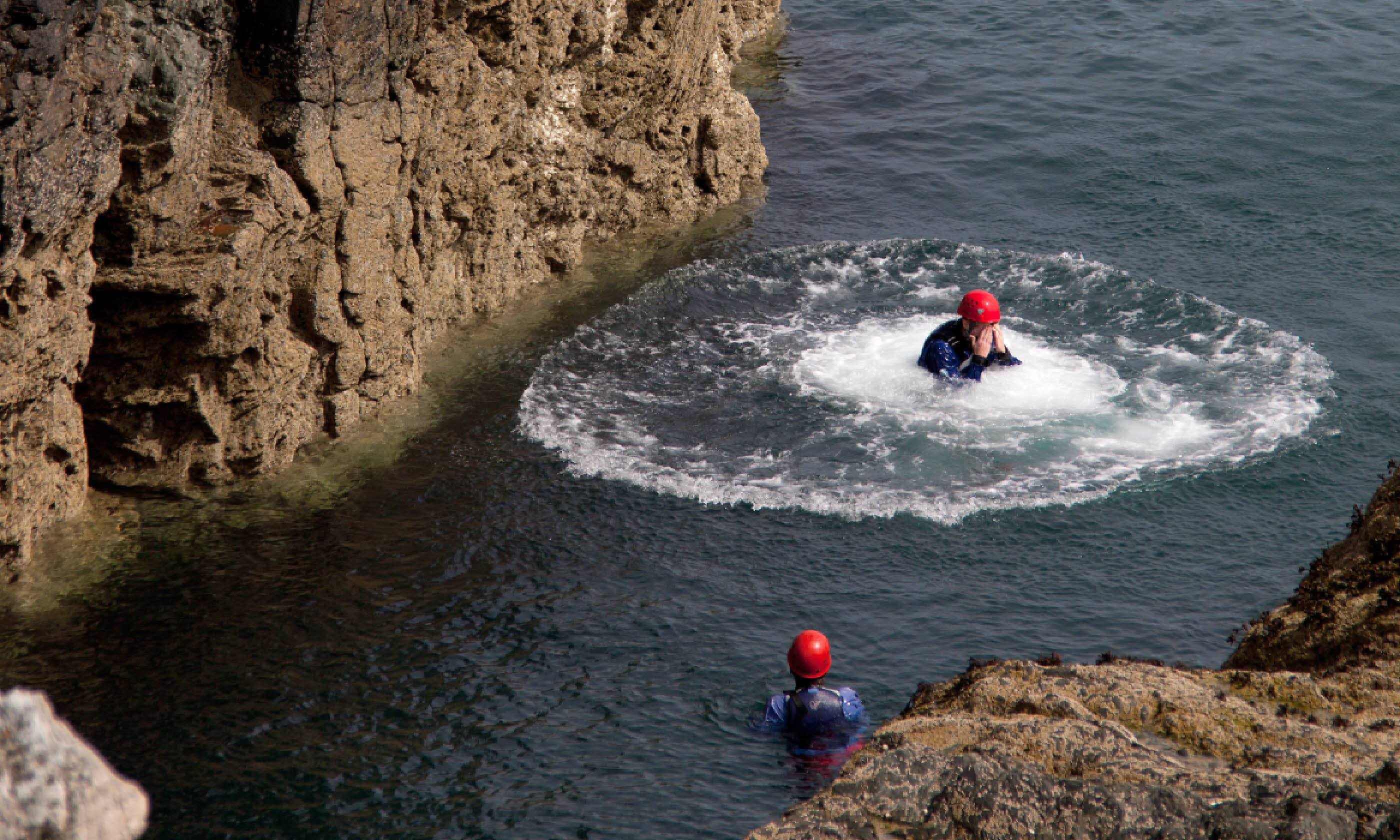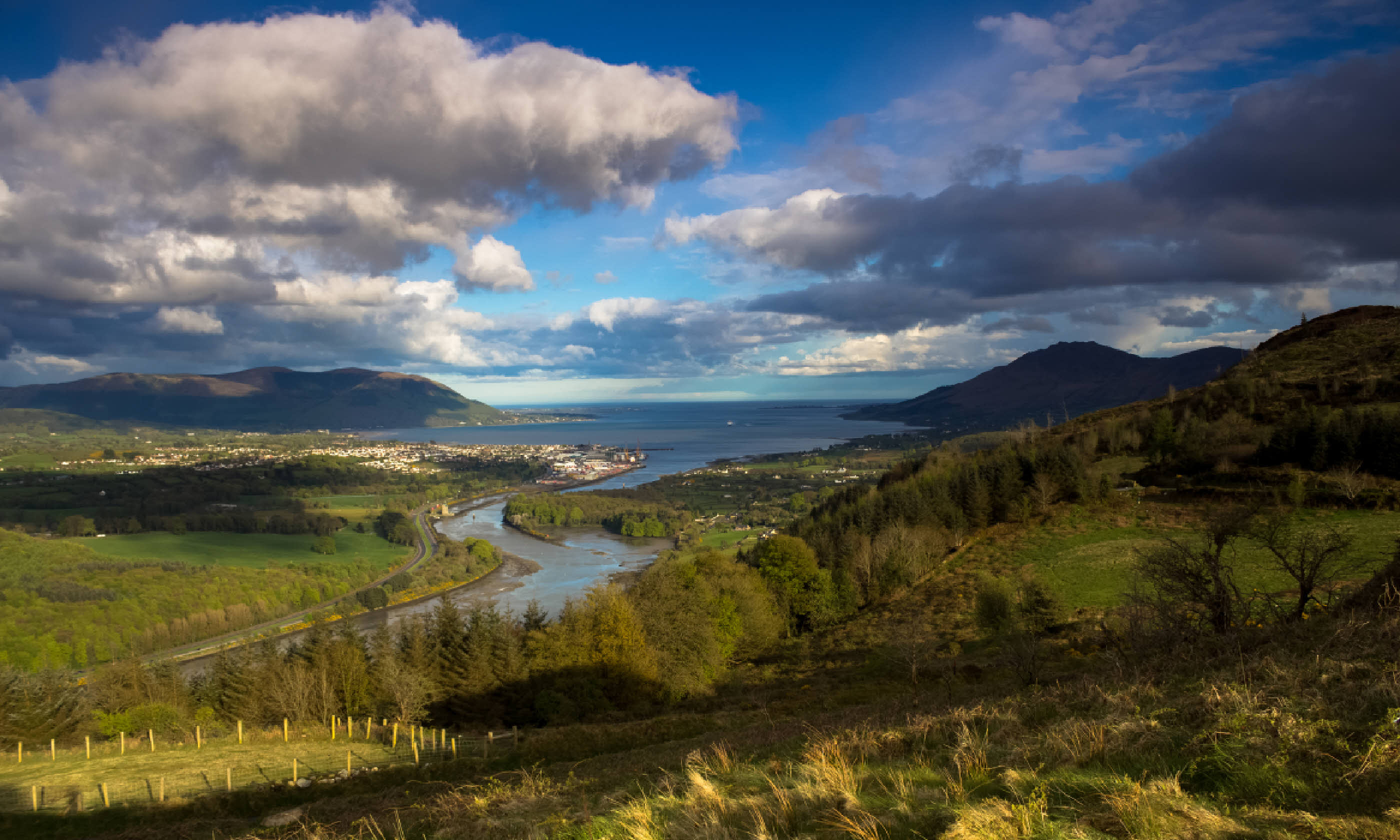
Warm fires and cosy pubs? Pah! Jeremy Head plunges into surging seas, hikes windswept mountains and wallows in weed in County Down's great outdoors
"It’s as easy as falling off a rock,” Martin assured me. “But it’s important to know how deep the water is first.”
The atmosphere was relaxed but safety was high on the agenda as I prepared to leap and flounder about the craggy coastline of Northern Ireland.
“Coasteering is about really exploring the shore up close – but it’s not about taking risks,” Martin continued. “Now, can everybody swim?”

Coasteering (Shutterstock)
The coast of County Down around Newcastle, about an hour south of Belfast, may be close to home, but few people seem to know about it. Even fewer don wet suits and helmets and dive in. However, I wasn’t the first on the scene: the same caves and coves I was about to explore once harboured smugglers and their booty, before the loot was hiked across the border.
And coasteering – the act of advancing along the intertidal zone of a rocky coastline on foot or by swimming – isn’t new either: its roots lay in the Victorian craze for collecting eggs from seabirds’ nests high up on the cliffs.
“The idea then was to avoid getting wet. These days that’s the whole point!” Martin laughed as we bounded down to the sea.
Once we’d got all the kit on – including gloves, trainers and buoyancy vests – we started on relatively flat terrain. Martin showed us how different coloured rock varied in slipperiness, demonstrating how to test each foot- and hand-hold before putting too much weight on it.
“Right,” he said, briefing over, “let’s go and jump!”
As I hit the surf, the surge of cold water up my wetsuit made me catch my breath. Feeling decidedly cumbersome in my buoyancy vest, I bounced and sploshed round a rock to the entrance of a large cave. The current almost pushed me inside and for a moment it was dark. Then I realised there was another exit – a craggy window of daylight just to the left. I paddled along this tiny passageway, bumping against the walls, and plopped back out into the sunshine. This was fun.
“We’ve mapped the whole of the coast here – we know every single nook and cranny,” puffed Martin as we clambered on to a tiny outcrop, the sea tugging at our heels.
Several more inlets of scrambling and plunging brought us to another deep cave. This time we weren’t just going inside. We climbed up and round to the huge flat stone on its roof. The drop into the surging sea hadn’t looked that far from below. Up here it looked a very long way down...
“It’s no more than five metres,” said Martin.
There was a stomach-turning adrenalin surge as I fell; then I hit the water hard with a crash and bounced back up to the surface like a cork out of a bottle. Pure exhilaration.
It wasn’t until we stumbled back to the Land Rover that I realised how cold I was. But I had the perfect antidote waiting for me – another dip in seawater. This time naked.
Seaweed bathing is a centuries-old tradition here. The natural nutrients in the weed make great skin replenishers. Claire Dickinson and Dermot Devine opened Soak seaweed baths in Newcastle several years ago and the concept has really taken off.
As my warm bath filled, we chatted about the complexities of pumping seawater and getting a licence to gather seaweed (it has to be done sustainably and they get through 300kg a week). “The best species are the wracks,” explained Claire. “Bladderwrack is particularly great because you can sit in the bath and pop the blisters on the weed!”
Once I’d selected some music, I sat in a steam cubicle to get my pores open. Then it was time for the bath. It didn’t look particularly inviting: the water was rather brown and the seaweed straggly against my feet. As I lowered myself in I realised the water was seriously slimy – almost syrup-like – and the seaweed’s gloopy resin left a smooth sheen on my skin. But I emerged red-faced 40 minutes later, skin glowing, feeling unbelievably clean.

Mourne and Cooley Mountains
Those smugglers wouldn’t have had the time or inclination for spa treatments: they were more concerned with landing their barrels of booze and getting them away from prying eyes as quickly as possible. Unfortunately there was a natural obstacle in their path.
The Mourne Mountains rise from the shoreline on the County Down coast to 849m Slieve Donard, Northern Ireland’s highest peak. The smugglers’ steep trek from the beach and on across the border came to be known as the Brandy Pad. Walking with local guide Loretto Coyle the next day, I walked part of the Pad in reverse, starting inland at Trassey Bridge and following it back to Newcastle.
We climbed slowly at first, through heather-clad downland, sheep splashing away through a stream as we approached. “When I was a child you never saw anyone here,” she said. “Things are changing now, but it’s still often just you and the mountains.”
We scrambled up a steep col called Hare’s Gap, surfacing above rolling valleys, a reservoir twinkling in the sunlit distance. “All Belfast’s drinking water comes from here,” said Loretto.
We skirted round the top of the valley and Loretto pointed out vibrant wild flowers with great names such as bog cotton and mauve harebells. It was a steep, heart-pumping stomp to the top of Slieve Donard, but worth it: from the summit the views out to the shimmering sea were as broad as you could imagine, Newcastle and its long beach spread out to the left, more peaks disappearing into the distance to the right.
Later that afternoon I drove to the far end of the beach to the Murlough National Nature Reserve. This 6,000-year-old series of sand dunes was designated Ireland’s first nature reserve in 1967, a unique habitat of birds and butterflies. But I was hoping to see larger specimens: in summer and early autumn it’s a fantastic spot for seal watching.
The light was fading fast as I squelched across wet sand looking up at the ever-greying sky. Was that crowd of humps further up the shoreline seals or rocks? The flat light made them look closer than they were, but finally I reached them, around 60 grey and common seals eyeing me from across a small stream.
By now my feet were soaked, but I didn’t care. Suddenly a lone jogger appeared around the headland. The seals took fright.
A stampede of humping and splashing erupted; small ones, big ones, greys and browns, they floundered across the sand and crashed into the sea. Several swam right past, sticking their heads curiously out of the water to look me up and down.
Then, far more agile in the water, they turned and dipped their noses under the surface, swimming on, out to sea.